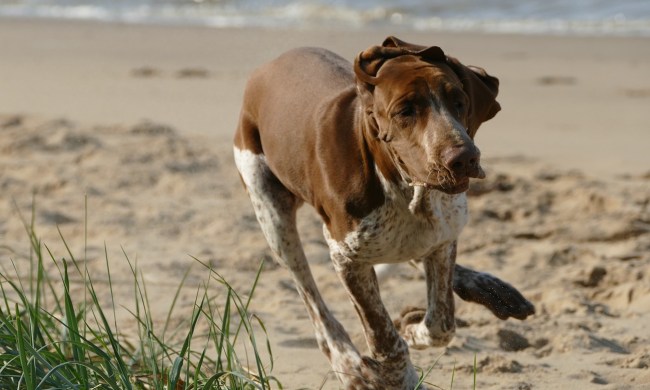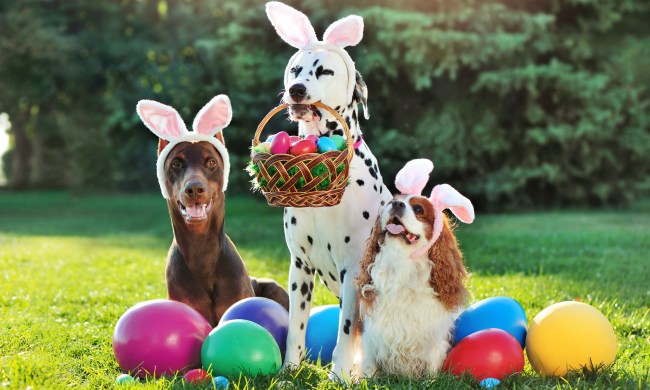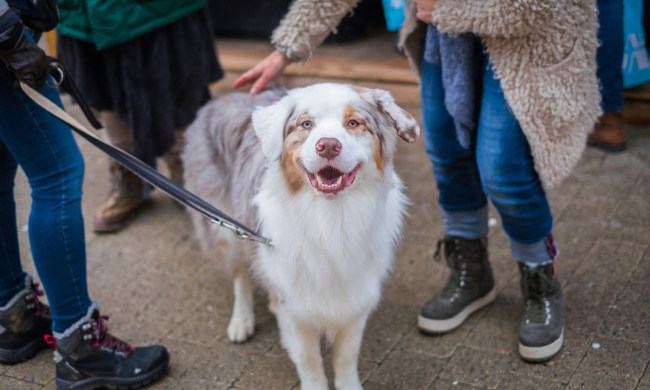Whether your pooch loves to play in the water at every chance or you’re giving your dog swimming lessons, it’s probably a good idea to add a personal floatation device (PFD) to his or her list of safety gear. When properly fitted, these life jackets help keep your dog buoyant and visible so he or she can safely enjoy water sports along with you.
Do dogs really need life jackets?
Contrary to popular opinion, not every dog is a natural swimmer. While some dogs like Labrador retrievers and spaniels seem to be built for swimming, others like bulldogs and pugs have trouble keeping their heads above water because their big chests make them top-heavy.
Regardless of your dog’s abilities, it’s a good idea to invest in a PFD if your dog spends any time around water. In addition to an unforeseen accident, even the best swimmers can run into trouble:
- They may become fatigued. Even the strongest swimmers might wear themselves out splashing around with the kids. And swimming in a body of water with any type of current or waves can be tiring.
- Something unexpected might happen. An older dog may misstep and fall into the pool while you’re not looking. Even a seaworthy pup can tumble into the drink if the boat takes a sharp turn.
- Underwater hazards, such as tree limbs and overgrown foliage, can cause injury or impairment. A life jacket will keep your pup’s head above water until you can get him or her to safety.
- Age can be an issue. If your older dog still loves the water but is having trouble getting around on land, a PFD can give him or her the security and confidence he or she needs to continue splashing around with the family.
Other benefits of wearing a life jacket
While safety concerns are the most important reason to make sure your dog is properly outfitted with a life jacket, there are other benefits:
- Warmth. We all know how cold water can be. Hypothermia is a concern for both humans and their canine friends. Wearing an insulated life jacket, like can keep your dog afloat and warm at the same time.
- Peace of mind. We know you’re a responsible dog owner and always keep a sharp eye on all members of your family. Putting a life jacket on your pooch just gives you an extra measure of assurance.
- Convenience. Life jackets are brightly colored for a reason — it makes them easy to spot. And most come equipped with safety handles so you can easily help maneuver your dog out of danger if needed.
Will a life jacket hinder my dog’s swimming?
No, not if it fits properly. In fact, many dog owners find that using a PFD helps them teach their dogs to swim. These flotation devices hold dogs in a horizontal swimming position and encourage them to use all four legs to propel themselves through the water.
How to choose the best life jacket for your dog
Most PFDs for dogs are made using weight and girth (the distance around the chest behind the front legs) guidelines. Since all dogs are different, these measurements will give you an idea of which floatation devices to try first; however, you may need to make adjustments based on your dog’s individual preference and body type.
The life jacket should fit snugly but not so tightly that it restricts body movement. Here are some additional things to keep in mind:
- Choose a style that is easy to put on and simple to adjust.
- Make sure your dog can walk in the PFD. If any part of the life jacket impedes your dog’s ability to move his or her front legs, he or she won’t be able to swim in it, either.
- Look for a PFD with straps positioned above the shoulder blades so you can pull your dog to safety if necessary.
- Choose a color that is easy to spot, especially if your lifestyle includes spending time on large bodies of water like oceans, lakes, or rivers.
If possible, take your dog into the store to be accurately fit. Most pet and marine stores encourage this. Some even have pools so you can test how the PFD functions on your pet.
Have fun on the water
Most states require boaters to wear life jackets; however, those laws don’t include our canine friends. They are completely dependent upon us to protect them. Since most are treasured members of the family, outfitting them with their own personal flotation device is an inexpensive way to keep everyone safe on the water.




